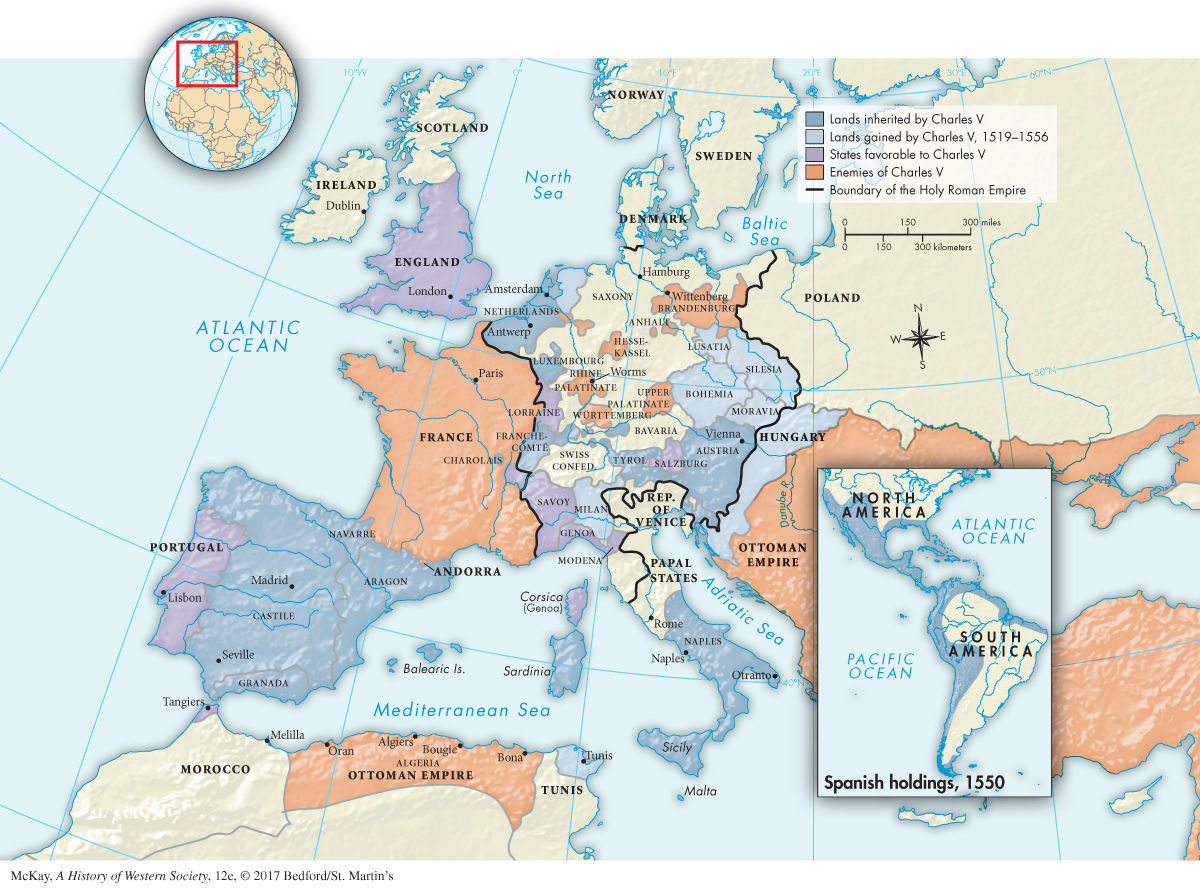A History of Western Society: Printed Page 404
A History of Western Society, Value Edition: Printed Page 387
A History of Western Society, Concise Edition: Printed Page 404
Chapter Chronology
War and diplomacy were important ways that states increased their power in sixteenth-century Europe, but so was marriage. Royal and noble sons and daughters were important tools of state policy. The benefits of an advantageous marriage stretched across generations, a process that can be seen most dramatically with the Habsburgs. The Holy Roman emperor Frederick III, a Habsburg who was the ruler of most of Austria, acquired only a small amount of territory — but a great deal of money — with his marriage to Princess Eleonore of Portugal in 1452. He arranged for his son Maximilian to marry Europe’s most prominent heiress, Mary of Burgundy, in 1477; she inherited the Netherlands, Luxembourg, and the County of Burgundy in what is now eastern France. Through this union with the rich and powerful duchy of Burgundy, the Austrian house of Habsburg, already the strongest ruling family in the empire, became an international power. The marriage of Maximilian and Mary angered the French, however, who considered Burgundy French territory, and inaugurated centuries of conflict between the Austrian house of Habsburg and the kings of France.
Maximilian learned the lesson of marital politics well, marrying his son and daughter to the children of Ferdinand and Isabella, the rulers of Spain, much of southern Italy, and eventually the Spanish New World empire. His grandson Charles V fell heir to a vast and incredibly diverse collection of states and peoples, each governed in a different manner and held together only by the person of the emperor (Map 13.1). Charles’s Italian adviser, the grand chancellor Gattinara, told the young ruler, “God has set you on the path toward world monarchy.” Charles, a Catholic, not only believed this but also was convinced that it was his duty to maintain the political and religious unity of Western Christendom.
